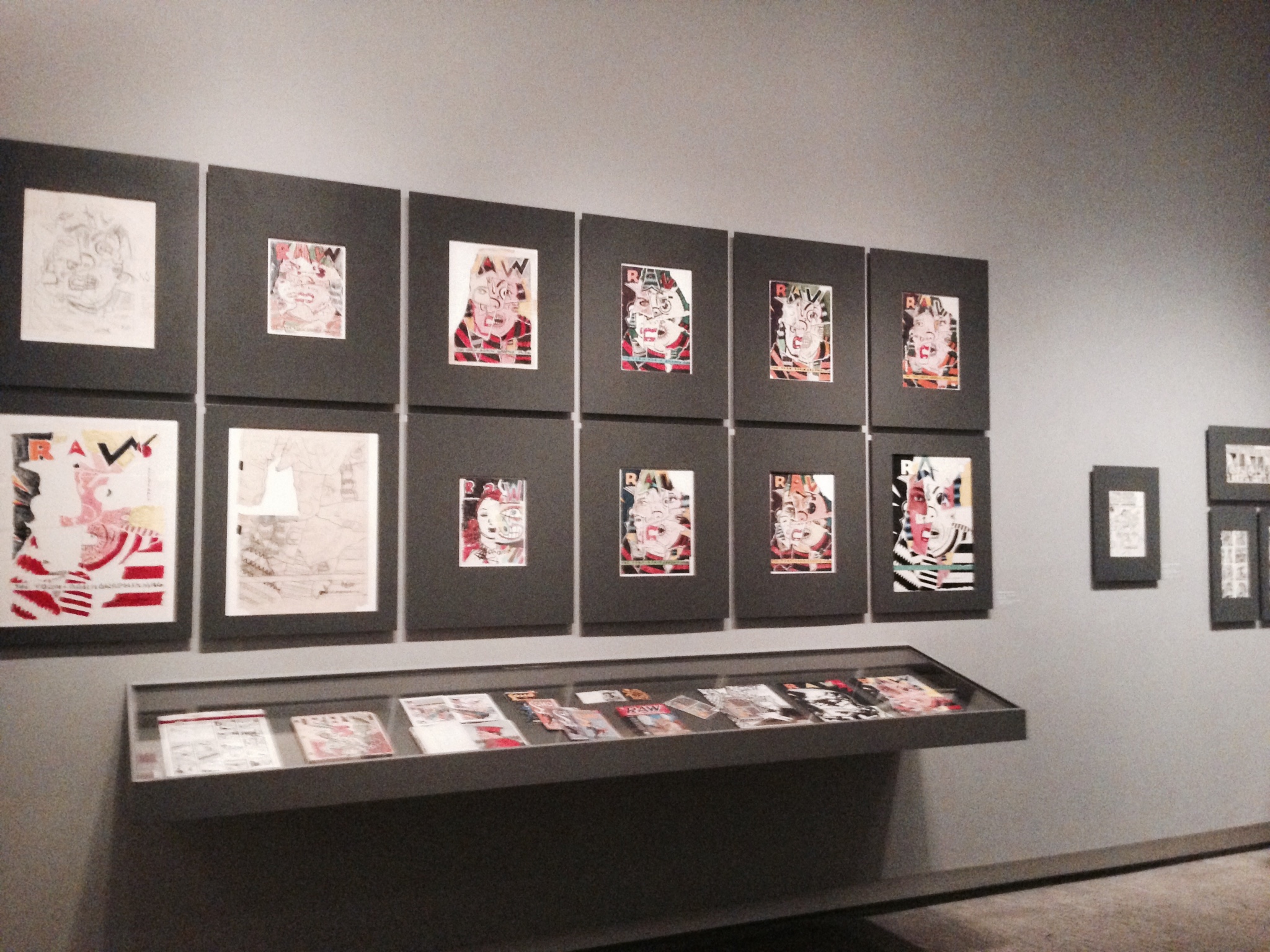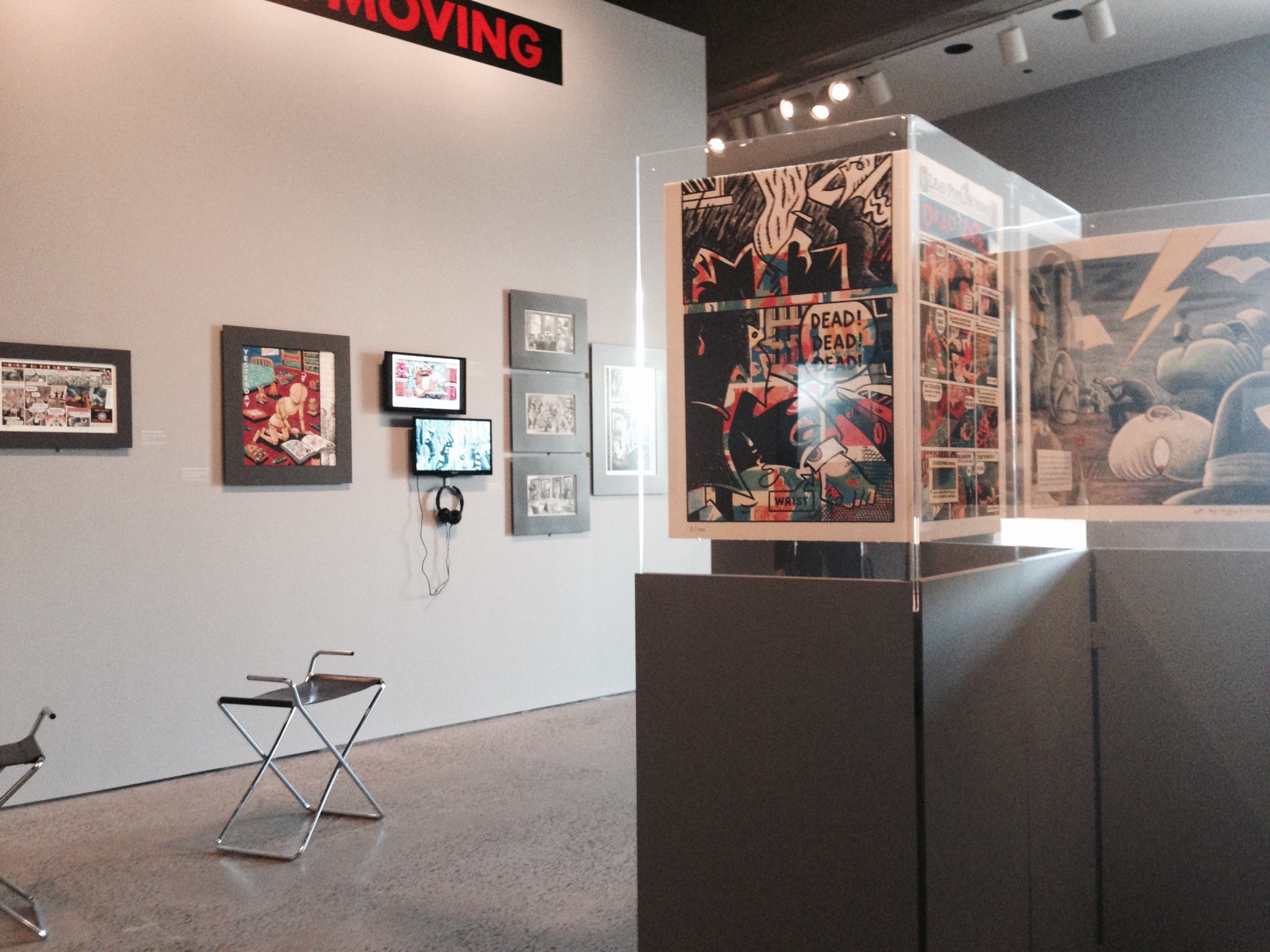SDCC 2018: Museums Make a Splash
/The Splashing Ink on Museum Walls panel (L to R): Rob Salkowitz, Kim Munson, Ann Nocenti, Adam Smith, and Emil Ferris. 7/19/2018. Photo by Jamie Coville.
At 4:00 on the first full day of San Diego Comic-Con, the five of us had a wide-ranging discussion about art, museums, and their importance before a full house in Room 29. Rob Salkowitz (Forbes, ICv2), the moderator and organizer, began the discussion with a reminiscence of seeing R. Crumb's Genesis at the Seattle Art Museum and how amazing it was to see the drawings of a comic artist displayed with art by Rembrandt, Durer, and Picasso as contextual ancestors. Rob wrote about this show in his essay "Splashing Ink on Museum Walls: How Comic Art is Conquering Galleries, Museums, and Public Spaces" which is included in the second issue of IDW's new hardcover art magazine Full Bleed. (I am also reprinting it in my book). The discussion touched on many topics, like the importance of narrative to exhibits of comics and different exhibit strategies. We talked about the influence exhibits have on artists viewing the work. Plans for the new SDCC Museum were discussed.
Specifically, I gave a capsule run-down on the history of exhibits of comic art from 1930 up to the 2005 show Masters of American Comics. Ann Nocenti is one of the organizers of the epic Marvel: Universe of Comics show currently on view at MoPop in Seattle. She described some of the strategies curators used to draw attention to original comic art within a very large, busy show stuffed with props, costumes, and characters from the Marvel movies. Emil Ferris, who would win 3 Eisners for My Favorite Thing is Monsters the next evening, spoke of how the masterpieces in the collection of the Art Institute of Chicago were an important part of her life and her book.
Adam Smith, making his first appearance as the Executive Director of the newly announced San Diego Comic-Con Museum, told us of CCI's plans for the museum which assumed the 37-year lease of the former San Diego Hall of Champions. The museum will not be a collecting institution. It will be a museum of pop culture celebrating all of the passionate constituencies that made SDCC the phenomenon it is. They plan on 3 large galleries for temporary exhibits, a cafe, and retail space. The full third floor will be an education center and galleries dedicated to comic art. They are currently in the fundraising stage and need to raise $35 MIL to remodel the existing space. Smith hopes to announce the opening date next year at SDCC's 50th Anniversary convention. If all goes to plan, the museum might open in 2022. Here's a promotional video about the museum project:
It was a spirited discussion and the audience seemed enthusiastic about the museum and about the topic of exhibitions in general. I hope the continued normalizing of comic art in museum exhibits will bring more recognition to artists and more opportunities for museums, scholars, curators, and art historians to explore and understand this important art form.
Listen to our discussion, archived on the Jamie Coville Experience. Selected by Heidi McDonald of The Beat as one of the top 17 comics history panels at SDCC (it's quite a list).
























